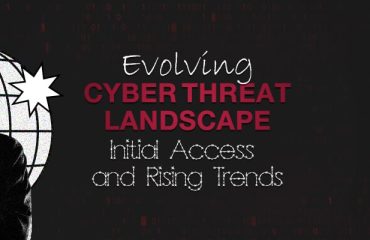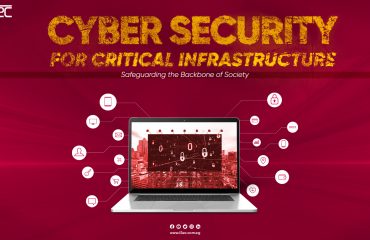
Cybercrime and cyberterrorism are significant threats to governments and businesses. Understanding the importance of cyber security can have high costs.
What is cyber security?
Cyber security is the process of protecting computers and networks from unauthorized access, including damage or destruction.
There are many disciplines involved in this field:
Network security: Computer networks should be secured from intruders, whether they are targeted attackers or opportunistic malware.
Application Security: Ensures that software and devices are free of threats. Developing secure programs and devices begins well before they are deployed.
Information Security: Ensures the integrity and privacy of data, both during storage and transmission.
Operational Security: Describes the processes and decisions involved in handling and protecting data assets. In this category are the permissions that users have when accessing networks and the procedures that determine how and where data may be stored or shared.
Disaster Recovery: The response by an organization to a cyber-security incident or another event that leads to a loss of operations or data. A disaster recovery policy outlines how the organization will restore operations and information to pre-event levels.
End-User Education: It is possible for anyone to accidentally introduce a virus to an otherwise secure system by not following good security practices. Organizations must teach users to delete suspicious email attachments, not plug in unidentified USB drives, and other important lessons.
Cyber threats come in many forms. What are they?
Malware
Malware refers to malicious software. Cybercriminals create malware to disrupt or damage legitimate users’ computers. Malware is among the most common cyber threats. An unsolicited email attachment or legitimate-looking download may spread malware, which is used by cybercriminals for profit or for political purposes.
Malware can take several forms, including:
Virus: Self-replicating programs spread malicious code throughout a computer system by attaching themselves to clean files.
Trojans: An example of malware that masquerades as legitimate software. Users are tricked into uploading Trojans onto their computers, causing damage or collecting data.
Spyware: Programs that secretly record what users do so cybercriminals can use them. It is possible, for example, for spyware to capture credit card information.
Ransomware: The malware locks down a user’s data and files and threatens to delete them unless a ransom is paid.
Phishing
Cybercriminals target victims with emails claiming to be from legitimate companies asking for sensitive information through phishing. A phishing attack involves tricking people into giving out their credit card data and other personal information.
SQL injection
This type of cyber-attack takes control of and steals data from a database using SQL (structured language query) injection. By inserting malicious SQL statements into databases, cybercriminals exploit vulnerabilities in data-driven applications. Their access to the database gives them access to sensitive information.
Denial-of-service attack
An attack that blocks a computer system from fulfilling legitimate requests is called a denial-of-service attack. When this occurs, the system becomes unusable, preventing an organization from performing its essential tasks.
Man-in-the-middle attack
Man-in-the-middle attacks involve cybercriminals intercepting communications between two individuals to steal data passing between the victim’s device and an unsecured WiFi network.
Tips to protect yourself against cyberattacks
- Keeping your software and operating system up to date will ensure you have access to the latest security patches.
- Install an anti-virus program: An anti-virus program like Kaspersky Total Security detects and removes threats. To ensure the best level of protection, keep your software up-to-date.
- Ensure that your passwords are difficult to guess by using strong passwords.
- Malware can be hidden inside email attachments sent by unknown senders.
- It is common for malware to spread through email links from unknown senders and unfamiliar websites.
- Avoid using unsecured WiFi networks in public places: Unsecured networks make you vulnerable to man-in-the-middle attacks.



